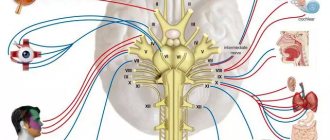Determining the basic properties of the nervous system is of great importance. This has direct relevance to both theoretical and applied research. Most laboratory methods developed to diagnose the basic properties of the nervous system require certain conditions and specialized equipment. Therefore, not only they are recognized as quite labor-intensive.
In contrast, express methods are free of this kind of disadvantages, including the tapping test, which will be discussed today. So, we present to your attention a tapping test, which is also a test for determining the properties of the nervous system based on psychomotor indicators.
To conduct the tapping test, we will need certain blank sheets with an approximate size of 203×283, on which six equal rectangles will be depicted three in a row. Also among the necessary things are a stopwatch and a pencil.
Instructions
Now we will put dots in the squares. Let's start with the very first square. From now on we will move exclusively clockwise. Each transition from one square to another is carried out without interrupting work and only at the command of the experimenter. During the entire time allocated for marking dots, work at your maximum rhythm. Each square will be given 5 seconds, during which it is necessary to place the maximum possible number of dots.
So, the experimenter gives the signal “Start”, then every 5 seconds he gives a new signal “Move to another square”, after 5 seconds of putting dots in the 6th square the experimenter gives the last signal “Stop”. All clear? Okay, then take a pencil in your right/left hand and fix it in front of the first square.
Keys to tapping test:
In order to process the results of the tapping test, first of all it is necessary to count the resulting number of points in each square. Next, you should build a graph of the subject’s performance in accordance with the results obtained; for this, 5-second time intervals should be plotted on the abscissa axis, and the calculated number of points in each square should be plotted on the ordinate axis.
Neural test
A little history
We came up with the name for this test about 15 years ago, then, apparently, with our help, several “neural tests” appeared in Moscow, born in different institutes and laboratories, ranging from the National Center for Human Medicine of the Russian Academy of Sciences to the Institute of Physiology of the Russian Academy of Sciences. Some scientists were even awarded for such tests (Professor N. Myagkova), others, on the contrary, were accused of superficial judgments (Professor Poletaev), some were simply not talked about very much, but by and large the principle of creating such tests both here and abroad there was one border. Such tests, both in our country and abroad, were based on immunological research, and, if a little more precisely, they studied antibodies (low-molecular proteins), which, like pilots, walked ahead of the “ships” (B-lymphocytes) that released these “ navigators."
At first, we were skeptical about this test, which essentially purported to study the microstructures of the brain; we looked at the control groups (healthy people and athletes), complaining that they were not very large.
Together with the creator of this test, we have been polishing it for many months, achieving the most complete information content in relation to neurological and mental disorders, then increasing and then reducing the number of its indicators, compared with similar tests that, for example, were used in addiction medicine, discussed these indicators as in Russia and abroad (the beginning of this work both in our country and abroad) - the second half of the 80s of the twentieth century. The discerning reader can easily find articles and entire monographs by famous scientists devoted to such tests with different names in domestic and foreign literature.
We ourselves tried to improve the neural test, consulting either with the professors of the Belk Institute in Pushchino - on the Oka River, considered the capital of biologists, then with scientists from the Moscow Institute of Physics and Technology, then with the leadership of the National Center for Mental Health (a scientific center for mental health, agreeing on work), then with laboratories Center of Neurology RAS. We wanted to achieve a more differentiated approach to the interpretation of the neural test, introducing new indicators that would help assess the state of individual receptors, the endings of neuron processes, and not just mediators of the central nervous system.
What is a "neural test"?
In short, the “neuron test” is antibodies to various neurons and many things that surround them: axons (the long processes of nerve cells) and their myelin sheaths (the axon, like a “wire”, wrapped in “insulating tape” of myelin) , individual neuroglial cells (more precisely to the GFAP protein), which support and nourish neurons, including the delivery of certain mediators (transmitters), to the receptors of many mediators - intermediaries in the transmission of impulses between neurons, calcium channels regulating the entry of the mediator into the neuron, etc.
The idea of the test is that if everything in the body strives to maintain homeostasis (a known fact for more than half a century), and the nervous and immune systems provide it (a fact generally recognized in the last 30 years), then changes in the microstructures of neurons, for example, due to a pathological process in schizophrenia, autism, Alzheimer's disease and other mental and neurological disorders, can be traced by the number of antibodies to the microstructures of the brain that are trying to “fix” what has been damaged as a result of the disease. In other words, you do not need to take a brain puncture to understand what is happening with neurons, but rather take blood for one of the options for modern immunological research.
What does the “neural test” tell us?
What does the “neural test” give us in practice today? With the help of a neural test, we can understand what happens to neurons and their environment in various disorders, and if we approach the issue more pragmatically, then make a diagnosis, determine the need for certain, say, psychotropic drugs, understand when to prescribe them, how much and how cancel them.
Let's take as an example at least one of the many indicators of the neural test - the S100 protein, which appears in several similar tests. In 1965, it was discovered and proven that one group of proteins of this S100 family is found only inside the cell, the other is often outside the cell (as a secretory molecule), and the third plays a role both inside and outside.
Extracellular S100 proteins stimulate neuronal survival and/or differentiation and cell proliferation, induce neuronal death, and stimulate (in some cases) or suppress (in others) the activity of inflammatory cells. Several reports link elevated S100β levels to mechanisms in Parkinson's and Alzheimer's diseases, encephalitis, schizophrenia, and other brain diseases.
Protein S100 is a known indicator of tumors; it increases in melanoma, neurosarcoma, lipoma, chondrosarcoma, astrocytoma, gastrointestinal tract tumors, stoma, salivary gland cancer, some types of adenocarcinoma, histiocytic tumor.
The S100 family of proteins is one of the potential drug candidates. High concentrations of S100 and S100 appear in inflammatory conditions such as rheumatoid arthritis, myocardial infarction, and Crohn's disease (ulcerative colitis). The S100 protein is toxic at very high concentrations. Current evidence also suggests that through its ability to cross biological barriers such as the blood-brain barrier (between the blood and brain), S100 suppresses inflammatory pathways that can cause brain damage.
At minimal concentrations, S100 can enhance neuronal survival during development and stimulate neurite outgrowth in cortical neurons. Due to its neurotrophic effects, S100 plays an important role in normal development of the central nervous system and recovery from injury.
S100-B has been proposed as a marker of neurological disorders due to its expression in the brain and cerebrospinal fluid and its low concentrations in the serum of healthy individuals. Acute brain injury, such as from trauma, results in a massive (50- to 100-fold) release of S100 in serum, whereas S100 levels in psychiatric disorders were only three times higher in patients compared to controls. We can add that S100 indicates mood swings, for example, with bipolar affective disorder or cyclothymia, it tells us about the approach of depression, etc.
So, tell me, is there any benefit to us from this neural test indicator? Let me remind you that there can be more than 20 such indicators (today we have chosen 14, in our opinion, the most informative.
The opinion of pundits
I always feel sorry for those people, in particular scientists, who have somehow, somehow, been framed by someone. I remember how the famous psychiatrist professor, honored organizer and scientist V.M. Banshchikov, already when he was almost 80 years old, essentially advertised a psychiatrist from Perm, who photographed the hallucinations of his patient. I also feel sorry for the professor-psychologist, head of the department at Moscow State University, who thoughtfully stated on the Internet that the biological neural test does not give anything (the consolation is that he also, for some unknown reason, said that biofeedback is a treatment method that has been developed for decades by his colleague - Head of the Department of Psychophysiology) - is also useless, however, just as transcranial stimulation is not needed. So, after all, our professor is a psychologist (?!), I apologize, who knows nothing about immunology or physiotherapy, how can he say anything about a neural test, excuse me, intelligible.
“The trouble is, if the shoemaker starts baking pies, And the cake maker starts making boots, And things won’t go well. And it has been noted a hundred times that some people love to take on someone else’s craft. He is always more stubborn and foolish than others: He would rather ruin the whole thing, And he is glad to soon become the laughing stock of the world, Than ask or listen to advice from honest and knowledgeable people.”
Well, okay, let's laugh with Krylov or take pity on the poor professor from Moscow State University, these are difficult times, everyone is missing something, forgivable. Yes, what is there, professor, ask almost any psychiatrist what at least one indicator of a neural test means, he will look and say “everything is fine with you” and do not insist that the psychiatrist explain to you why you spent several thousand rubles on this test, rather everything, you will achieve nothing.
Analysis of tapping test and interpretation of results
The strength of nervous processes is an indicator of the performance of nerve cells and the nervous system as a whole. A strong nervous system can withstand a greater load and duration than a weak one. The technique is based on determining the dynamics of the maximum tempo of hand movement. The experiment is carried out sequentially - first with the right and then with the left hand. The resulting maximum tempo dynamics can be divided into five types:
- convex type - the pace increases to the maximum in the first 10-15 seconds of work; then by 25-30 seconds it may drop below the initial level, that is, the level that was observed in the first 5 seconds of work; this type of curve indicates that the subject has a strong nervous system;
- even type - the maximum tempo is maintained at approximately the same level throughout the entire work time; this type of curve characterizes the subject's nervous system as a nervous system of average strength;
- descending type - the maximum pace taken by the test subject decreases already from the second 5-second segment and remains at a reduced level throughout the entire work; this type of curve indicates the weakness of the subject’s nervous system;
- intermediate type - the pace of work decreases after the first 10-15 seconds; this type is regarded as intermediate between medium and weak nervous system strength - medium-weak nervous system;
- concave type - an initial decrease in the maximum tempo is then replaced by a short-term increase in tempo to the initial level; due to the ability for short-term mobilization, such subjects also belong to the group of people with a moderately weak nervous system.
The tapping test is usually used in conjunction with others that measure different levels of personality characteristics. Such a test is especially useful in determining career guidance and conducting psychological counseling to correct and/or improve a personal style of activity. Testing is done individually and usually takes about 2 minutes.
Nerve test: how to pass it?
The test consists of 35 questions. In fact, this is the first test of your nerves: whether or not you have the patience to answer all the questions.
How to calm your nerves: 5 folk remedies
You only need to answer “yes” or “no”. To complete the test as quickly as possible, write down your answers.
Nerve test and its 35 questions:
1. Does it annoy you if you see an inappropriately dressed person?
2. Do you get upset over trifles, for example, because of a stain on your clothes or a long wait for a waiter in a cafe?
3. Do you sleep well?
4. Do you have difficulty relaxing?
5. Does a stressful situation worsen your physical condition, for example, does your blood pressure rise, does your head hurt, does your stomach hurt?
6. Are you angry about crowds in public places?
7. Do you get frustrated if you have to wait a long time for something?
8. Do you bite your nails because of nerves?
9. Do you depend on the opinions of people around you?
10. Do you suffer from panic attacks?
11. Can you cry because of the sad ending of a movie or book?
12. Are you embarrassed in unfamiliar companies?
13. Do people's bad habits get on your nerves?
14. Do you flinch if you hear a loud, unexpected sound?
15. Do you run to the doctor with a runny nose or a splinter in your finger?
16. Are you afraid of dying unexpectedly?
17. Do you have more than one phobia?
18. When you are worried, is it noticeable because of a frightened look, trembling hands or an uncertain voice?
19. Do you want to give up everything and run away to where no one knows you?
20. Are you angry about traffic jams?
21. Changes in plans get on your nerves?
22. Do you get upset if you find yourself the subject of jokes and witticisms, even from close people?
23. Do you have difficulty falling asleep if you are away from home and your bed?
24. Have you ever taken a sedative for nerves?
25. Are you used to carefully planning everything, even holidays?
26. Do you get angry when you have to perform several tasks at the same time?
27. Do people who are late make you angry?
28. Are useless birthday gifts annoying?
29. Do you get nervous when you’re tired?
30. Are you easily drawn into conflict?
31. In stressful situations, do you break into a sweat and your body starts to itch?
32. Are you afraid to watch horror movies?
33. Do you raise your voice when you are annoyed?
34. Do you get scared easily?
35. Do you feel that the modern rhythm of life is getting on your nerves?
Plugin sponsor: Tests for girls
Nervousness and lifestyle.
How to stop being nervous? How to overcome anxiety?
Tapping testtest on the topic
Tapping test
Method of express diagnostics of the properties of the nervous system based on psychomotor indicators E. P. Ilyina
DESCRIPTION.
The test tracks temporal changes in the maximum tempo of hand movements. Determining the basic properties of the nervous system is of great importance in theoretical and applied research. Many of the laboratory methods for diagnosing the basic properties of the nervous system require special conditions and equipment. They are labor intensive. Express methods, in particular the tapping test (or as it is sometimes called “Woodpecker”), do not have these shortcomings.
Why was the 30-second segment chosen and not longer? Initially, the maximum pace was measured during 1-1.5 minutes of work, but, having made sure that the most important information for diagnosis was obtained during the first 20-25 seconds and that long-term work only leads to a loss of time and effort for the subjects, the testing time was limited to 30 With. After all, the purpose of the test is to identify changes in the central nervous system, and not in the muscles. True, one could argue that the “weak” still experience physical fatigue even after working for 30 seconds (as, by the way, do many of the “strong”). However, from the point of view of developmental mechanisms, significant differences are observed between different types of fatigue. When working at moderate and high intensity, the main causes of fatigue are associated with autonomics, and when working at maximum intensity (as in our test) - with the development of extreme inhibition in the nerve centers. That is why the tapping test is used to determine the endurance of the nervous system, and working at maximum speed becomes a prerequisite for performing the test to determine the strength of the nervous system. If this condition is not met, the diagnosis will be incorrect. Another conclusion follows from this: a person’s endurance cannot be used to judge the strength of his nervous system. M. N. Ilyina, for example, showed that during work of high and medium intensity, the endurance of people with weak and strong nervous systems is the same, but this occurs due to different psychophysiological mechanisms.
A prerequisite for diagnosing the strength of the nervous system using a tapping test is maximum mobilization of the subject. To achieve this, it is necessary not only to interest the subject in the results of the examination, but also to stimulate him during the work with words (“don’t give up,” “work faster,” etc.). This contributes to a clearer division of subjects into “strong” and “weak”.
It is also important to focus the attention of the subjects on the fact that they must begin performing the required actions immediately at the maximum pace, otherwise a convex type of curve may be artificially created.
The Tapping Test technique is difficult to apply in the case of young children (up to 6-7 years), since their maximum frequency of movements is low and differences between individuals are smoothed out. In addition, they cannot force themselves to work at maximum speed for a long time.
Currently, computer methods have been developed for diagnosing the strength of the nervous system using the tapping test, which significantly simplify and clarify the diagnosis. In the recent past, other methods have been used to study the strength of the nervous system (“external brake” and the galvanic skin version of the “Extinction with Reinforcement” method - in the laboratory of V. S. Merlin, the electroencephalographic version of the “Extinction with Reinforcement” method - in the laboratory of V. D. Nebylitsyna). However, for the most part, they are difficult for mass use, so they are not widely used either by psychologists or physiologists.
The methods described above were most often used when examining athletes. A number of studies have established that they correlate with each other. In particular, the Tapping Test technique correlates at the 0.01 level with the Curve Slope technique and with the reflexometric Extinction with Reinforcement technique.
However, the presence of correlations does not mean that all techniques have the same diagnostic value. They are unequal in the time spent on making a diagnosis. The shortest time for the subject to work (30 s) using the “Tapping test” method, while in other methods it is 20-40 minutes, or even more. The work intensity also varies, which is reflected in the severity of the diagnostic criteria. It is the highest in the “Tapping Test” method, therefore, according to its criteria, fewer “strong” ones are identified than using other methods.
But when it is used, the differences between the “strong” and “weak” in a number of characteristics of activity and behavior become more clearly visible.
Based on theoretical concepts, the summation of excitation should manifest itself not only in individuals with a strong, but also in those with a weak nervous system. Consequently, a short-term increase in tempo in the first seconds of work should be observed in everyone - this sign cannot be differentiated for dividing into typological groups according to the properties of the strength of the nervous system.
Why then does summation not manifest itself in persons with a moderate and weak nervous system?
To answer these questions, the following study was conducted. When the subjects performed the tapping test, their movements were recorded on a tape drive, so that the dynamics of changes in the maximum tempo could be tracked at any time interval. It was found that if we take segments equal to 1.5 s, then both people with an average and half of the people with a weak nervous system show a short increase in the maximum tempo (3-4.5 s). Consequently, they also exhibit the effect of summation of excitation, but it is short-lived and weakly expressed. And since the methodology selected 5-second segments, such an increase in tempo is neutralized in the first 5 with a decrease and therefore is not noticed.
To calculate the coefficient of functional asymmetry, the task is performed with the right and left hands.
The test is usually used in combination with others that measure different levels of personality characteristics. It is especially useful for career guidance and for psychological counseling to improve an individual’s style of activity.
EQUIPMENT.
Testing can be carried out both using recording equipment and graphically.
When using the graphical registration method, you will need standard forms, which are sheets of paper (203x283, A4), divided into six equal rectangles arranged in three rows, a stopwatch, and a pencil.
The order of placing points for the right and left hands in separate fields is mutually reverse: clockwise and counterclockwise; field No. 4 should be located under field No. 3.
O.P. Eliseev offers not 6 (as is usually proposed, for example, for the younger group of teenagers or in the original version of E.P. Ilyin), but 8 fields for placing points so that the trend of changes in performance is more clearly detected. Then the order of placing points for the right and left hands in separate fields is mutually reverse: clockwise and counterclockwise; Field No. 5 should be located below Field No. 4.
To prevent the points from falling on top of each other, it is recommended to move the hand in a circle, but this is not a prerequisite for performing the technique. RESEARCH PROCEDURE.
The experimenter gives a signal: “Start”, and then every 5 seconds gives the command: “Next”. After 5 seconds of work in the 6th square, the experimenter gives the command: “Stop.”
Study protocol
Task _______________ Date _______________
Subject _____________
Experimenter _________
The subject’s well-being _________________________________
| Square no. | Operating time period (VS) | Number of dots | |
| right hand | Left hand | ||
| 1st | 0-5 | ||
| 2nd | 6-10 | ||
| 3rd | 11-15 | ||
| 4th | 16-20 | ||
| 5th | 21-25 | ||
| 6th | 26-30 | ||
TREATMENT.
Includes the following procedures: 1) count the number of points in each square; 2) construct a performance graph, for which we plot 5-second time intervals on the abscissa axis, and the number of points in each square on the ordinate axis. The coefficient of nervous system strength (NSNS) is calculated using the following formula:
Where X1 is the sum of taps in the first five-second segment, X2 is the sum of taps in the second five-second segment, X3 is the sum of taps in the third five-second segment, etc. Calculate the coefficient of functional asymmetry for the performance of the left and right hands, obtaining the total values of the performance of the hands by adding all the data for each of the rectangles. The absolute difference in performance of the left and right hands is divided by the sum of performance, and then multiplied by 100%:
Where Σ R is the total sum of points placed by the right hand
Σ L - the total sum of points placed by the right left
In scientific research, it is often necessary to rank subjects, so quantitative criteria for the strength of the nervous system are also needed.
Ranking is carried out as follows. In accordance with qualitative criteria, all examined subjects are divided into groups with a strong, medium and weak nervous system. Within the groups, additional ranking of those examined is carried out according to the total value of the deviation of the tempo at each point from the initial level. The sum (taking into account the sign) of deviations for each subsequent 5-second segments is calculated in relation to the pace shown during the first 5 seconds. For example, in subject a, the maximum frequency of movements in 5-second segments was 43, 40, 38, 37, 38, 35. Taking the first digit as a conditional zero, we obtain the following sum of deviations: -3, -5, -6, -5, -8 - -27. In subject B, the maximum frequency of movements in the segments was equal to 41, 35, 36, 32, 33, 33, which gives the following sum of deviations: -6, -5, -9, -8 - -36. As you can see, both subjects have a weak nervous system, but in the first it is less pronounced, so he will occupy a higher place in rank.
Having carried out the ranking within each typological group, the surveyed are lined up in a general row according to the places occupied in their group. Therefore, it may be that a subject with a large “-” deviation from a group with an average strength of the nervous system will be ranked higher than a person with a weak nervous system, whose total negative deviation will be smaller. The main criterion, therefore, is quality.
When taking into account the qualitative criterion, certain difficulties arise that should be paid attention to. For example, what is considered a reliable increase in pace in the first 10-15 days of work? Based on existing experience, we can recommend the following: when information is taken visually from a dial counter, 3 or more movements (in a 5-second period) should be considered a reliable difference; when recording tempo graphically and with other fixed methods of collecting information, a difference of 2 or more should be considered movements.
ANALYSIS OF RESULTS.
The strength of nervous processes is an indicator of the performance of nerve cells and the nervous system as a whole. A strong nervous system can withstand a greater load and duration than a weak one. The technique is based on determining the dynamics of the maximum tempo of hand movement. The experiment is carried out sequentially, first with the right and then with the left hand. The resulting options for the dynamics of the maximum tempo can be conditionally divided into five types: - convex type: the tempo increases to the maximum in the first 10-15 seconds of work; subsequently, by 25-30 seconds, it may decrease below the initial level (i.e., observed in the first 5 seconds of work). This type of curve indicates that the subject has a strong nervous system;
— even type: the maximum tempo is maintained at approximately the same level throughout the entire duration of work. This type of curve characterizes the subject’s nervous system as a nervous system of medium strength;
— descending type: the maximum tempo decreases already from the second 5-second segment and remains at a reduced level throughout the entire work. This type of curve indicates weakness in the subject's nervous system;
- intermediate type: the pace of work decreases after the first 10-15 seconds. This type is regarded as intermediate between medium and weak nervous system strength - medium-weak nervous system;
- concave type: an initial decrease in the maximum tempo is then replaced by a short-term increase in tempo to the initial level. Due to the ability for short-term mobilization, such subjects also belong to the group of people with a moderately weak nervous system.
Types of dynamics of maximum tempo of movements
Graphs: · A - convex type; B - flat type, C - intermediate and concave types, D - descending type.
Horizontal line - a line marking the level of the initial tempo of work in the first 5 seconds.
The higher the KSNS, the stronger the nervous system; the lower, the weaker the nervous system.
Based on the value of the KSNS, you can interpret the results on a 25-point diagnostic scale of strength-weakness of the nervous system 10, taking into account the sign in the following table
| NS mobility coefficient | Diagnosis | ||
| > | Points | Discharge | |
| 1,80 | and more | 25 | Very mobile ( 5 ) |
| 1,73 | 1,80 | 24 | |
| 1,66 | 1,73 | 23 | |
| 1,58 | 1,66 | 22 | |
| 1,50 | 1,58 | 21 | |
| 1,43 | 1,50 | 20 | Movable ( 4 ) |
| 1,38 | 1,43 | 19 | |
| 1,32 | 1,38 | 18 | |
| 1,26 | 1,32 | 17 | |
| 1,20 | 1,26 | 16 | |
| 1,12 | 1,20 | 15 | Average ( 3 ) |
| 1,04 | 1,12 | 14 | |
| 0,96 | 1,04 | 13 | |
| 0,88 | 0,96 | 12 | |
| 0,80 | 0,88 | 11 | |
| 0,74 | 0,80 | 10 | Inert ( 2 ) |
| 0,68 | 0,74 | 9 | |
| 0,62 | 0,68 | 8 | |
| 0,56 | 0,62 | 7 | |
| 0,5 | 0,56 | 6 | |
| 0,42 | 0,5 | 5 | Very inert ( 1 ) |
| 0,35 | 0,42 | 4 | |
| 0,27 | 0,35 | 3 | |
| 0,20 | 0,27 | 2 | |
| less than 0.20 | 1 | ||
If during the study the performance of the left and right hands was studied, then when analyzing the results, the resulting performance graphs are compared. In most cases they are the same in nature. For right-handers, the performance of the right hand is higher than that of left-handers, and for left-handers it is vice versa. In case of significant discrepancies between the graphs, it is advisable to repeat the experiments at certain intervals.
It is important to compare the strength of the nervous system with the temperamental characteristics of the subject. On this basis, you can make a diagnosis of performance and think through recommendations to improve it. The sign of the functional asymmetry coefficient is interpreted as follows: if the resulting balance coefficient has a “+” sign, this indicates a shift in balance towards excitation; if the resulting coefficient has a “—” sign, this indicates a shift in balance towards inhibition.
INSTRUCTIONS: “At my signal, you must begin to put dots in each square of the form. Within 5 seconds you need to place as many points as possible. The transition from one square to another is carried out using my “Next” command, without interrupting work and only in a clockwise direction. Work at your maximum pace at all times. Take a pencil in your right (or left) hand and place it in front of the first square of the standard form.”
FORM
Tapping test
Subject______________________________ Year of birth___________ Date____________
| 1 | 2 | 3 |
| 6 | 5 | 4 |
LiteratureIlyin E.P. Differential psychophysiology. – St. Petersburg: Peter, 2001. Ilyin E.P. Psychomotor organization of a person. – St. Petersburg: Peter, 2003. Ilyina M.N., Ilyin E.P. About one of the conditions for diagnosing the strength of the nervous system by excitation using the tapping test // Psychophysiological features of sports activity - L., 1975. - P.183-186. Psychology of a teenager. Workshop. Tests, methods for psychologists, teachers, parents/ed. A.A. Reana - St. Petersburg: “Prime-EUROZNAK”, 2003 Practical psychodiagnostics. Methods and tests. Tutorial. Ed.-comp. D.Ya.Raigorodsky - Samara, 2001. - P.528-530. Tsagarelli Yu.A. Theory of systemic psychological diagnostics: Textbook.— Kazan, 2009
If you took it yourself in a private laboratory
1. Report the test result to the clinic at your place of residence.
2. Notify the employer, class teacher (for students), and a specialist from a medical institution (if you are undergoing treatment and received the test result at this time) about the test result.
3. Go into self-isolation mode and do not go anywhere (neither to work, nor to study, nor to the store: to buy food and medicine, ask for help from friends, family or volunteers).
4. Limit contacts with people living together as much as possible (separate dishes, mask regime, disinfection, etc.).
5. Call a doctor, emergency room or ambulance for examination, treatment and further examination.
If the test was prescribed by a doctor at a medical facility, emergency room or ambulance
1. Also act - maintain self-isolation, limit contacts, following previously issued medical recommendations.
2. If the condition worsens (high temperature, shortness of breath, the oxygen reading on the pulse oximeter is below normal, etc.), call a doctor, emergency room or ambulance.
Who will know the test result?
1. Rospotrebnadzor (both private and public laboratories are obliged to transfer data to the department for taking anti-epidemic measures)
2. Medical institution (hospital or clinic) where the test was prescribed
3. Medical institution at your place of residence - if the test was taken on your own initiative (Rospotrebnadzor will issue an order to doctors to take you under observation)
4. Law enforcement agencies (to monitor compliance with the self-isolation regime)
Who else will be checked?
1. Data from the medical institution and laboratory will be sent to the Federal Budgetary Institution “Center for Hygiene and Epidemiology in the Perm Territory” under the management of Rospotrebnadzor. Its employees will examine the source of infection and establish a circle of contact persons at the place of residence and place of work of the sick person.
2. Your employer, whom you previously notified about the positive test, will provide the FBUZ with information about contact persons at the place of work.
3. From November 18, in relation to contact persons with a high risk of infection, Rospotrebnadzor will NOT issue a resolution “On conducting a mandatory medical examination (medical observation), isolation (observation) of a citizen who has been in contact with a patient with an infectious disease.” Now the Department notifies citizens who are sick with COVID-19 and those in contact with the patient about the need for them to comply with the isolation regime within 14 calendar days from the date of contact with the patient. Notification is carried out through available communication channels, which citizens report to specialists of the Center for Hygiene and Epidemiology in the Perm Territory during the collection of epidemiological anamnesis.
Who are considered contact persons?
- living together with the source of infection;
- those who were in a closed space (classroom, office, etc.) with a source of COVID-19 during a work shift at a distance of less than 2 m and without using recommended personal protective equipment.
Who tests contacts and when?
From November 18, 2022, studies of the biomaterial of contact persons are carried out only in the case of clinical manifestations similar to coronavirus infection (COVID-19). The collection of material for research is carried out by a medical organization (regulated by SP 3.1.3597-20 “Prevention of new coronavirus infection (COVID-19)”).
Questions related to COVID-19 can be asked by calling the hotlines:
● You can contact Rospotrebnadzor by phone: 8(342) 2365190, 2393120, 2364152, 2083468 from Monday to Friday from 09.00 to 18.00, on weekends from 10.00 to 18.00.
● get contacts to call a doctor, get advice about the conditions under which hospitalization is possible, etc. – on the coronavirus and ARVI hotline 8(342) 2580787
Test for assessing the properties of the nervous system on seven scales
TEST
| Full name of the person being assessed | __________________________________________________ |
| Age (full years) | __________________________________________________ |
| Job title | __________________________________________________ |
| Subdivision | __________________________________________________ |
| Date of completion | __________________________________________________ |
Instructions
There are 56 questions in front of you. For each of the five answer options, choose the one that best suits you. Circle your answer.
Test
| No. | Question | Answer |
| 1 | Do your eyes tire easily when reading in dim light? | A. very fast; b. fast; c. average; d. slowly; e. So slow |
| 2 | Do you often get upset due to any difficulties or failures at work? | a. Often; b. often; c. occasionally; d. rarely; e. very rarely |
| 3 | Does your attention often get distracted when working for long periods of time in a quiet environment? | a. very rarely; b. rarely; c. average; d. often; e. Often |
| 4 | Do you tend to work mostly carefully or carelessly? | a. very carefully; b. thoroughly; c. average; d. carelessly; e. very casually |
| 5 | Can you focus quickly when starting work? | a. very fast; b. fast; c. average; d. slowly; e. So slow |
| 6 | Are you able to work with concentration in a tense, responsible situation? | a. Always; b. often; c. it depends; d. rarely; e. never |
| 7 | How energetic and assertive do you tend to get things done? | a. very energetic; b. vigorously; c. average; d. not energetic enough; e. sluggishly |
| 8 | Are you good at detecting weak light sources? | a. Very good; b. Fine; c. average; d. Badly; e. very bad |
| 9 | Is it easy or difficult to make you angry? | a. very easy; b. easily; c. average; d. difficult; e. very hard |
| 10 | Do you usually like or dislike the abundance of things to do? | a. really like; b. like; c. average; d. often; e. Often |
| 11 | Do you often suddenly lose your attention towards the end of a lecture hour or an hour of work? | a. very rarely; b. rarely; c. Sometimes; d. often; e. Often |
| 12 | Do you tend to do rash things? | a. very rarely; b. rarely; c. occasionally; d. often; e. Often |
| 13 | Do you like strong sensations (dangerous sports, gambling, etc.)? | a. I love it very much; b. I love; c. not interested; d. I do not like; e. I really don't like it |
| 14 | Can you quickly switch from one activity to another? | a. At once; b. after a short pause; c. average; d. after a long pause; e. after a very long pause |
| 15 | Do you easily pick up faint sounds (rustles in the forest, the noise of a high-flying airplane, etc.)? | a. very easy; b. easily; c. average; d. with difficulties; e. very bad |
| 16 | Do you strive to redo or improve your work? | a. without end; b. many times; c. moderately; d. I avoid redoing; e. not at all inclined |
| 17 | Do you suffer from insomnia? | a. never; b. rarely; c. occasionally; d. often; e. constantly |
| 18 | Do large doses of stimulating drinks (coffee, tea, beer, alcoholic drinks) make you feel joyful? | a. Always; b. often; c. Sometimes; d. rarely; e. never |
| 19 | Do you need a boost to fully engage in a new activity? | a. very rarely; b. rarely; c. Sometimes; d. often; e. Always |
| 20 | Do you make typos or other random errors in your work? | a. very little; b. few; c. average; d. a lot of; e. so many |
| 21 | Do you often tend to take on additional and unnecessary work? | a. Often; b. often; c. Sometimes; d. rarely; e. never |
| 22 | Do you violently reveal your feelings in connection with the progress of work? | a. very stormy; b. stormy; c. average; d. weak; e. no way |
| 23 | Do small doses of stimulating drinks (coffee, tea, beer, alcohol) cause changes in your tone? | a. joyful excitement; b. cheerful state; c. do not work; d. cause slight relaxation; e. cause drowsiness |
| 24 | Do you often get carried away with new things? | a. Often; b. often; c. occasionally; d. rarely; e. very rarely |
| 25 | Do you often experience, for no particular reason, unexpected transitions from a joyful mood to sadness and vice versa? | a. Often; b. often; c. occasionally; d. rarely; e. very rarely |
| 26 | How long do you experience difficulties and failures at work compared to those around you? | a. much less lasting; b. less long lasting; c. the same; d. longer; e. much longer lasting |
| 27 | Do you fall asleep quickly? | a. very fast; b. fast; c. average; d. slowly; e. So slow |
| 28 | Is it easy or difficult for you to remain calm in exciting company? | a. very easy; b. easily; c. average; d. difficult; e. very hard |
| 29 | Do you easily manage to withstand painful stimuli? | a. very easy; b. easily; c. average; d. difficult; e. very hard |
| 30 | Do you often fail to finish the job you started because of difficulties? | a. very rarely; b. rarely; c. occasionally; d. often; e. Often |
| 31 | How proactive are you in your work compared to other people around you? | a. much more than others; b. more than others; c. average; d. less than others; e. much less than others |
| 32 | Do you wake up if there is a slight noise or soft sounds? | a. Always; b. often; c. Sometimes; d. rarely; e. never |
| 33 | Are you shy? | a. not typical; b. to a small extent; c. average; d. to a high degree; e. to a very high degree |
| 34 | Are you impatient? | a. not typical; b. to a small extent; c. average; d. to a high degree; e. to a very high degree |
| 35 | Are you faster or slower at learning what you need than other people? | a. much faster than others; b. faster than others; c. average; d. slower than others; e. much slower than others |
| 36 | Is systematicity and uniformity in your work normal for you? | a. Always; b. often; c. Sometimes; d. rarely; e. never |
| 37 | Does it happen that you react more strongly to small troubles than to big ones? | a. Often; b. often; c. Sometimes; d. rarely; e. very rarely |
| 38 | Do you often take on work without calculating your strength? | a. Often; b. often; c. Sometimes; d. rarely; e. very rarely |
| 39 | Do you enjoy or dislike being involved in work that requires quick action? | a. great pleasure; b. some pleasure; c. indifferent; d. unpleasant; e. very unpleasant |
| 40 | Do you quickly tune out thoughts about work by interrupting or finishing it? | a. very fast; b. fast; c. average; d. slowly; e. So slow |
| 41 | Do you tend to become impatient when giving a lengthy explanation to an uncomprehending listener? | a. to a very large extent; b. to a large extent; c. average; d. to a small extent; e. to a very small extent |
| 42 | Do you often lose your nerve in difficult or dangerous situations? | a. very rarely; b. rarely; c. it depends; d. often; e. Often |
| 43 | How persistent are you in achieving your goals compared to other people around you? | a. much more than others; b. more than others; c. average; d. less than others; e. much less than others |
| 44 | Do you often feel sleepy while doing work? | a. very rarely; b. rarely; c. Sometimes; d. often; e. Often |
| 45 | Do you get hot-tempered in your work group (study group) for minor reasons? | a. Often; b. often; c. occasionally; d. rarely; e. very rarely |
| 46 | How well developed is your hearing (how subtly do you distinguish sound shades, tones, faint sounds)? | a. Very good; b. Fine; c. average; d. weak; e. very weak |
| 47 | Do weak doses of stimulants (coffee, tea, alcohol) make you drowsy? | a. never; b. rarely; c. Sometimes; d. often; e. constantly |
| 48 | Are you sleeping soundly? | a. very strong; b. strong; c. average; d. sensitive; e. very sensitive |
| 49 | If necessary, do you easily break the habit of old habits (daily routine, arrangement of things, etc.)? | a. very easy; b. easily; c. average; d. difficult; e. very hard |
| 50 | Is it easy for you to instill this or that attitude towards your surroundings? | a. very easy; b. easily; c. average; d. difficult; e. very hard |
| 51 | Do you quickly get tired of monotonous mental work? | a. I don’t get tired for a very long time; b. I don’t get tired for a long time; c. average; d. I get tired quickly; e. I get tired very quickly |
| 52 | Do you like being a leader in a company? | a. really like; b. like; c. average; d. often; e. Often |
| 53 | How touchy are you compared to others? | a. much more than others; b. more than others; c. average; d. less than others; e. much less than others |
| 54 | Do you notice “chewing” (repetition) of the same thoughts? | a. very rarely; b. rarely; c. occasionally; d. often; e. Often |
| 55 | Do you often get hot-tempered for serious reasons? | a. never; b. rarely; c. occasionally; d. often; e. constantly |
| 56 | Are you inclined to take decisive, final action? | a. Often; b. often; c. occasionally; d. rarely; e. very rarely |
Thank you!
Key to the technique
Test Description
The test for assessing the properties of the nervous system on seven scales is intended to identify the following properties of the nervous system assessed on seven scales:
- sensitivity to light, sound, gustatory, olfactory and tactile stimuli of low intensity;
- emotional reactivity – by duration, intensity, frequency of occurrence;
- mobility of nervous processes - in various manifestations of this property;
- the strength of the inhibitory process - protective and differentiation;
- energy – activity, need for activity;
- endurance to long-term stress - work capacity in a temporary sense, the ability to concentrate on one activity for a long time, etc.;
- endurance to intense influences - stressful situations, increased importance, very important competitions, etc.
When compiling the test, the following aspects of human life and situations in which the typological properties of the nervous system can find their expression were taken into account:
- work and fatigue;
- rest and sleep;
- communication with people;
- character traits and habits.
Key to the test
Each scale includes eight questions:
- sensitivity: 1, 8, 15, 23, 32, 37, 46, 50;
- emotional reactivity: 2, 9, 22, 25, 33, 38, 45, 53;
- mobility of nervous processes: 5, 14, 19, 26, 35, 40, 49, 54;
- braking force: 4, 12, 17, 27, 34, 41, 48, 55;
- energy: 7, 10, 21, 24, 31, 39, 43, 52;
- endurance to long-term loads: 3, 11, 16, 20, 30, 36, 44, 51;
- endurance to intense loads: 6, 13, 18, 28, 29, 42, 47, 56.
Points are awarded according to the following scheme: answer “a” – 5 points, “b” – 4, “c” – 3, “d” – 2, “e” – 1.
To simplify scoring, use the following table to record points for your answers:
| Scale | Question no. | Point | Total points |
| Sensitivity | 1 | ||
| 8 | |||
| 15 | |||
| 23 | |||
| 32 | |||
| 37 | |||
| 46 | |||
| 50 | |||
| Emotional reactivity | 2 | ||
| 9 | |||
| 22 | |||
| 25 | |||
| 33 | |||
| 38 | |||
| 45 | |||
| 53 | |||
| Mobility of nervous processes | 5 | ||
| 14 | |||
| 19 | |||
| 26 | |||
| 35 | |||
| 44 | |||
| 49 | |||
| 54 | |||
| Braking force | 4 | ||
| 12 | |||
| 17 | |||
| 27 | |||
| 34 | |||
| 41 | |||
| 48 | |||
| 55 | |||
| Energy | 7 | ||
| 10 | |||
| 21 | |||
| 24 | |||
| 31 | |||
| 39 | |||
| 43 | |||
| 52 | |||
| Endurance to long-term loads | 3 | ||
| 11 | |||
| 16 | |||
| 20 | |||
| 30 | |||
| 36 | |||
| 44 | |||
| 51 | |||
| Endurance to intense loads | 6 | ||
| 13 | |||
| 18 | |||
| 28 | |||
| 29 | |||
| 42 | |||
| 47 | |||
| 56 |









